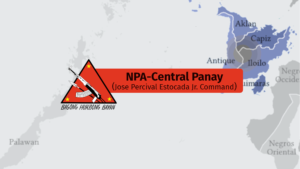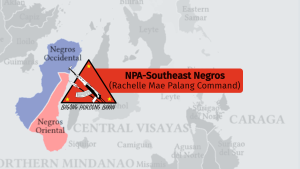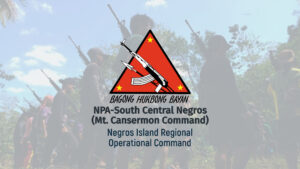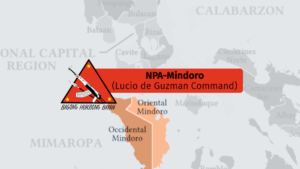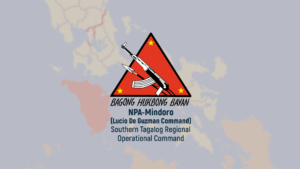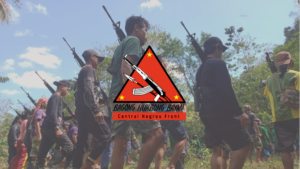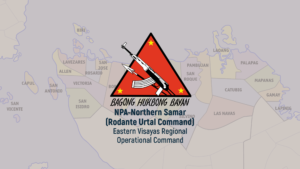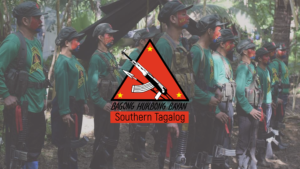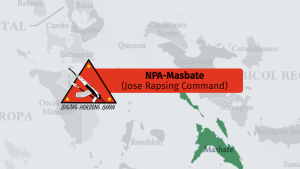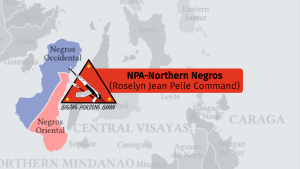The FQS changed my life by Ka Oris
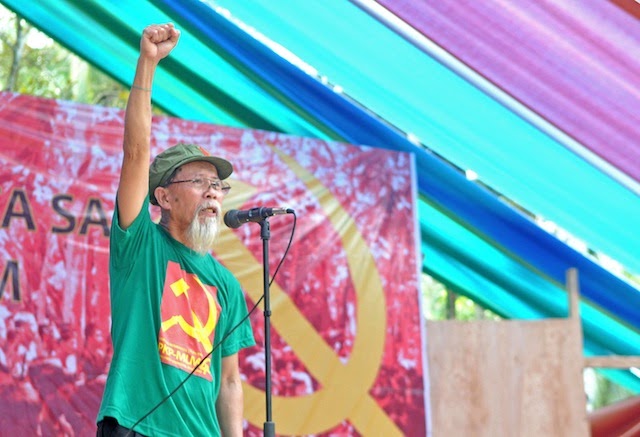
The upsurge of the youth and student movement in the first quarter of 1972 was used by Dictator Ferdinand Marcos as one of the major excuses to impose martial law nationwide and extend his monopoly of power and wealth.
When I enrolled in Central Mindanao University in Musuan, Bukidnon in 1968, Mindanao was then budding with political activism within the ranks of the students and among the ranks of peasants, workers, the religious and other middle class sectors. The socio-political-economic national crisis that was also reflected in Mindanao served as the basis of vibrant youth political activism back then.
The peasant movement against land monopoly by big landlords, corporate plantations and logging companies was mostly predominated by a reformist peasant association named Federation of Free Farmers (FFF) under the slogan “land to the landless”. This movement spread throughout the island, from Zamboanga Peninsula and Cotabato provinces in Southern Mindanao, Agusan-Surigao and Misamis Oriental, Bukidnon and Lanao provinces in Northern Mindanao, and the Davao provinces in Eastern Mindanao.
Meanwhile, the labor movement that fought for workers’ rights and just wages was equally vibrant among the workers from the wood-based companies, large agricultural plantations, service sectors and other semi-processing companies.
Such was the general political climate in the island when the youth propaganda movement in the National Capital Region started to influence students in school campuses in all provinces and cities in Mindanao – tackling campus issues, as well as peasants’ and workers’ issues, and linking and raising these to political and economic issues. The biggest youth movement then in Mindanao was a reformist religious youth organization named Kilusang Khi-Rho ng Pilipinas, while the most militant were the Kabataang Makabayan (KM) and the Sandigan ng Demokratikong Kabataan (SDK).
In my second year in college, involvement in the movement for social change began to influence a great number of students, including myself, in school campuses Mindanao-wide. It was a big source of pride to be involved in student activism. My conservative religious upbringing greatly influenced my decision to join the reformist Khi-Rho and not the militant KM and SDK. In my fourth year in college, political activism was so popular among the students that during the election for the student council, in which I served as the overall campaign manager, we celebrated a landslide victory. All those who won were activists from either Khi-Rho, KM or SDK, all non-activists lost.
In my fifth year in college (1972), a qualitative change occurred in the political social movement nationwide. The youth propaganda movement across the land had successfully popularized and clarified that our basic peasant problem is feudalism, that the social base of fascism is bureaucrat capitalism, and that there is a continued political, economic and social dominance by US imperialism in the country. It was also during this time that Amado Guerrero’s Philippine Society and Revolution (first published in 1971 in the UP Philippine Collegian) scientifically explained in full historic detail and concrete societal context the fundamental semi-feudal and semi-colonial characteristic and the three basic problems of Philippine society, and the national democratic revolution as the solution to these. The need for social change was clear, but the debate as to the method of achieving genuine social change remained. Was it through peaceful reform or through armed revolution?
The economic and political crisis nationwide came to a head, and it became evident that Marcos was hell-bent on clinging to power through whatever means when he tried testing the waters by suspending the writ of habeas corpus. In reaction to this, there was a groundswell of open resistance from the peasants, workers, youth and the middle class. Students’ open defiance was most admirably and militantly demonstrated in what we now popularly call the First Quarter Storm, in which the UP Diliman Commune inspired a nationwide upsurge of student protests that reverberated from Luzon to Visayas and Mindanao.
The peasants in Mindanao became restive. The reformist FFF started to secretly arm themselves, with many Khi-Rho members joining them. The labor movement became evermore widespread and militant in the whole island. Although there was strong unity among the students to defy the fascist Marcos regime and prepare for the possibility of martial law, the debate between reform and revolution continued.
Engineer Ben Boiser (now retired dean of Xavier College of Agricultural Engineering) and I found ourselves locked in endless public debates with KM and SDK leaders Raoule Geollegue (now retired DENR director) and Orly Ravanera (now Cooperative Development Authority national chair) during our sessions in the student council, and even in our private discussions as friends and activist comrades.
But still we marched together as one in the early part of September 1972, when we launched the three-day 42-kilometer Youth March from Musuan, Bukidnon to Malaybalay City to dramatize our protest and indignation against the destruction of our environment by large-scale logging and mining companies and giant corporate dams nationwide. This was in response to the appeal of the late Edgar Jopson (then chairman of the National Union of Students of the Philippines) that he sent to our student council via telegram calling for a “sympathy protest” after destructive flooding struck Central Luzon.
On September 22, 1972, martial law was declared by the dictator Marcos, effectively putting an end to the debate on “reform or revolution”. That very night, more than a hundred active members of KM, SDK and Khi-Rho met at the oval ground of our university campus, and in the cover of darkness we pledged to continue the fight against the fascist dictatorship and against feudalism and imperialism by joining the New People’s Army (NPA) to wage armed revolution. The next day, hundreds of students who failed to leave the university campus in Musuan on time were herded by the military en masse to Malaybalay City and detained indefinitely.
The rest of us who made it to the countryside found ourselves groping for guidance on how to launch armed struggle because there was no NPA unit yet then to absorb us. I was forced to come down from the forested area of Davao and Upper Pulangi River to continue urban underground organizing until 1975. Then, one early morning of December 1975, I woke up from a long rigorous night’s hike in the hinterlands of Agusan del Norte, wondering where I was, before I realized, “This is it, I am now in the bosom of the armed revolution with my guerrilla comrades and the masses.”
So why is it relevant to recall the FQS at this time and context?
Then, as now, revolutionary ferment in the campuses of UP, CMU and other universities nationwide was never a case of school administration policy inciting revolution. It was state terrorism and martial law that drove us to take our struggle to the countryside. In the same manner, Duterterrorism is driving outstanding students from UP and other premier universities to continue the struggle in the countryside because state terrorism leaves them no other option but armed resistance. So why blame UP?
Clearly, blaming UP and taking back the gains of the youth and student movement against the Marcos dictatorship (the one-sided abrogation of the UP-DND Accord) is but a flimsy excuse to militarize school campuses for fear of another FQS in the offing. The US-Duterte regime, like all reactionary regimes, is so stupid to overlook the lesson: fascism begets resistance, and state terrorism and martial law was and will remain the number one recruiter of revolutionaries among the youth.
Edgar Jopson, Lorena Barros, Antonio Tagamolila, Julius Giron, Eugenia Magpantay, Randall Echanis and others made their lifetime decision to join the revolution during their youthful years and died as martyrs and heroes of the oppressed and exploited masses. In the same context, Myra “Mayang” Algarme, Recca Noelle Monte, Daniel Imperial, Rona Jane “Rjei” Manalo and other Iskolars ng Bayan of the younger generation were not “terrorists”, contrary to the desperate and malicious black propaganda of the US-Duterte regime, but people’s martyrs and heroes worthy of respect and emulation.
In Mindanao, some died as martyrs and heroes such as Ben Esparagosa, Joel Zaragosa, Alvin Luque, Leonido Nabong, Samuel Ampo, Lolong Cayanong, to name a few. Notable names from Luzon who died in Mindanao also include Edjop, Eman Lacaba, Magtanggol Roque, among others. Although some turned their backs on the challenges of serving the people for one reason or another, most of those from the older generation, together now with the recent breed of young revolutionaries from UP and other campuses nationwide, continue to uphold their commitment to serve the people.
I remember how my loving father strongly suggested that I finish agricultural engineering in CMU thinking that this course would land me a job in USA and fulfill the “American dream” for his son. I thank him for sending me to CMU. I thank CMU and the FQS for totally changing my life – not to have become another colonial “American dreamer” but someone who is PROUDLY AND HAPPILY spending his prime and senior years in life NOT AS A TERRORIST, as Duterte, Lorenzana, Parlade and their paid hacks would like to portray, BUT SOMEONE TRULY SERVING THE PEOPLE.
And whether they like it or not, youth and students of today and the next generations to come will continue to learn from, relive and uphold the tradition and legacy of the FQS. ###

